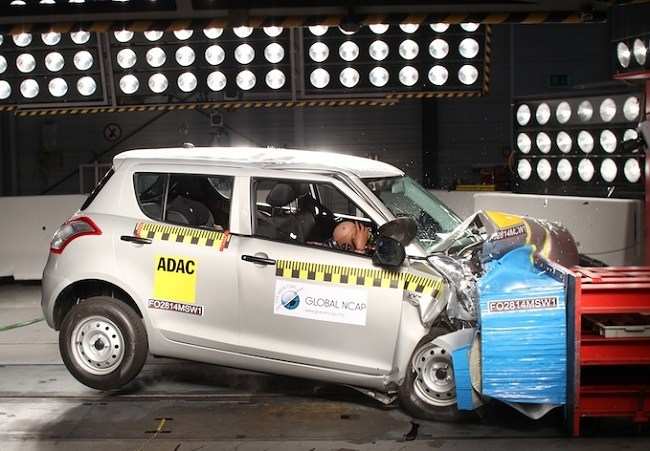
Affordable cars sell like hot cakes! Take for example Maruti Alto 800 which is not too heavy on the pocket. There are lakhs of people who own it, a few knowing that it is one of the cars which has failed the global NCAP car crash tests. What does that mean? It’s not a safe car to drive and it can crumble in accident situations!
Such and many other cars have failed to prove unbeatable security provisions in the past few years compelling the global watchdog to push companies to take back cars like Nissan’s Datsun Go!
With
TATA NANO AND MARUTI ALTO 800
The compact budget-friendly baby of Tata, the 4-seater Nano fell short of vehicle structures (proved inadequate) and collapsed to varying degrees, resulting in high risks of life-threatening injuries to the occupants on the front seat and rear seat. The Nano and the Alto 800 are built to a cost, and it shows in the results.
In the case of a collision like this, the driver of the Nano would be reduced to pulp, and the driver of the Alto 800 would suffer a similar sort of fate. Both cars received zero stars in the Global NCAP test, and failed to make the grade in the UN test as well. Bodyshell integrity was rated as 'unstable' in both cases for the little Tata and the Maruti.
HYUNDAI i10
FORD FIGO
It couldn't pass the Global NCAP test, but it did pass the UN test, with the passenger shell managing to stay largely intact after the collision. The bodyshell was rated 'stable', and the rating could've improved with the addition of airbags, according to GNCAP.
POLO
Global NCAP first subjected the Trendline, the base version of the Polo, to a test like all the other cars, which it failed. It did pass the UN test, and later, VW sent in a Trendline equipped with airbags, and that car fared a whole lot better, being the only hatchback made in India to notch up a four-star Global NCAP rating. As a result, Volkswagen will now offer the Polo with dual airbags as standard across the range in India, with a price increase of up to Rs 22,700. Watch the non-airbag Polo's crash test here, and the airbag-equipped variant's run here
MARUTI SWIFT
Global NCAP's testing protocol mandates that all cars (including base variants) must carry at least airbags and ABS to get its certification; and so on that count alone the Indian Swift model failed the test even before the crash happened. The crash analysis showed the crash-test-dummies having sustained near-fatal injuries, more so in the case of the driver. The car's structural integrity was also deemed as unstable.
Interestingly, the made-in-Europe Swift has a much sturdier structure and had achieved a 5-Star crash certification from Euro-NCAP.
DATSUN GO
Nissan’s Datsun Go received a zero-star safety rating on account of the vehicle structure collapsing and it was rated unstable during the test. The results further said the high forces placed on the crash test dummies pose a grave risk of death or serious injury. The Go’s body shell is so unstable that it would be pointless to include airbags in the car.
